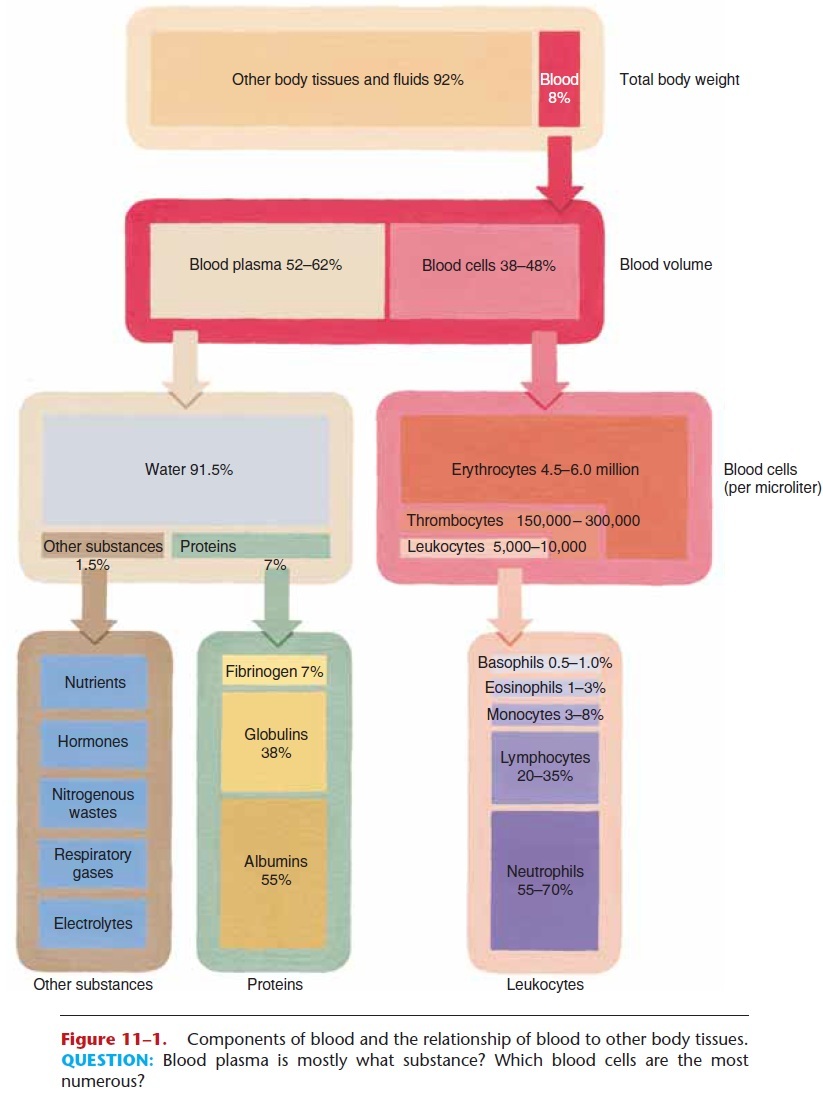Chapter: Essentials of Anatomy and Physiology: Blood
Characteristics of Blood
CHARACTERISTICS OF BLOOD
Blood has distinctive physical characteristics:
Amount—a person has 4 to 6 liters of blood, depend-ing on his or her size. Of the total blood volume in the human body, 38% to 48% is composed of the various blood cells, also called formed elements. The remaining 52% to 62% of the blood volume is plasma, the liquid portion of blood (Fig. 11–1).

Figure 11–1. Components of blood and the relationship of blood to other body tissues.
Color—you’re probably saying to yourself, “Of course, it’s red!” Mention is made of this obvious fact, however, because the color does vary. Arterial blood is bright red because it contains high levels of oxygen. Venous blood has given up much of its oxy-gen in tissues, and has a darker, dull red color. This may be important in the assessment of the source of bleeding. If blood is bright red, it is probably from a severed artery, and dark red blood is probably venous blood.
pH—the normal pH range of blood is 7.35 to 7.45, which is slightly alkaline. Venous blood normally has a lower pH than does arterial blood because of the presence of more carbon dioxide.
Viscosity—this means thickness or resistance to flow. Blood is about three to five times thicker than water. Viscosity is increased by the presence of blood cells and the plasma proteins, and this thick-ness contributes to normal blood pressure.
Related Topics